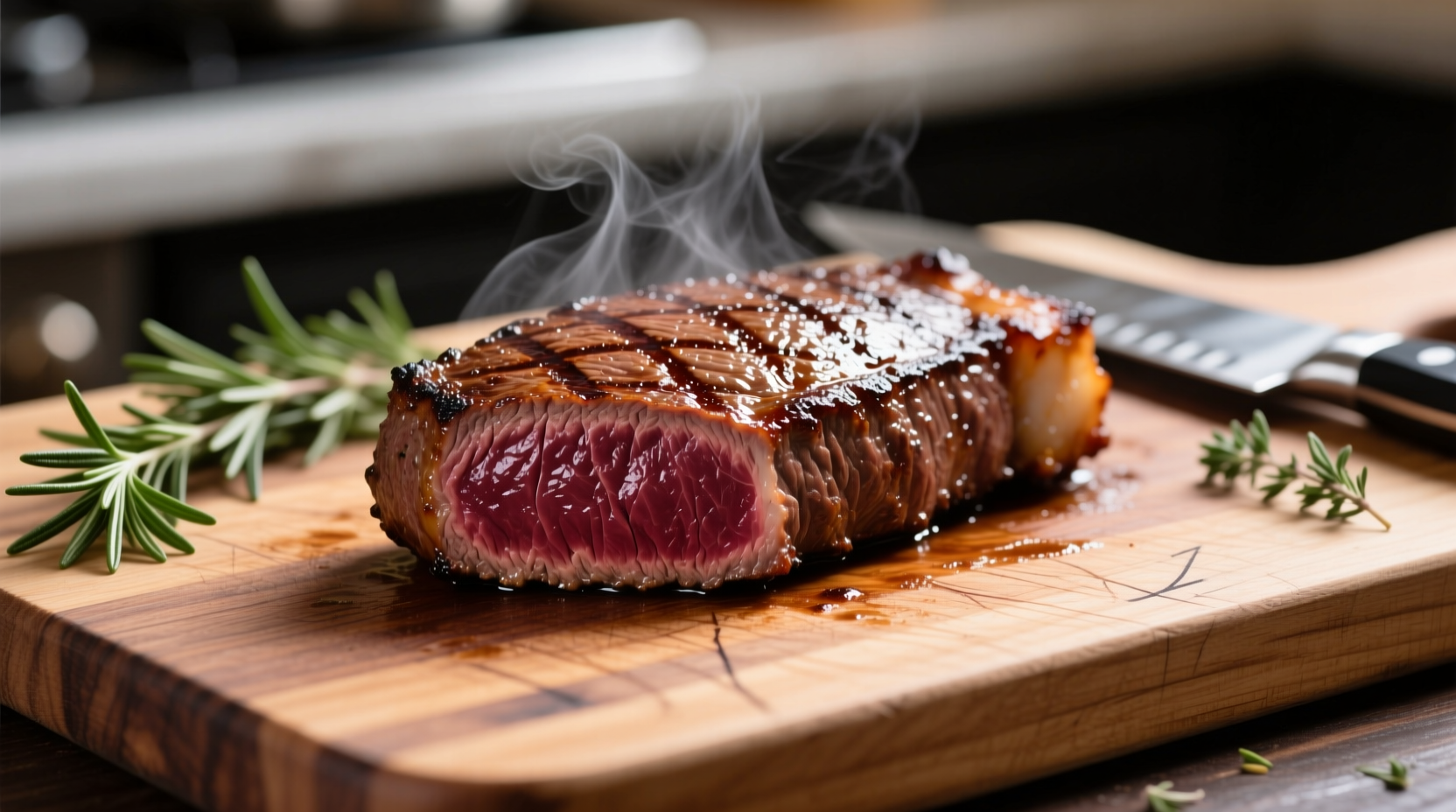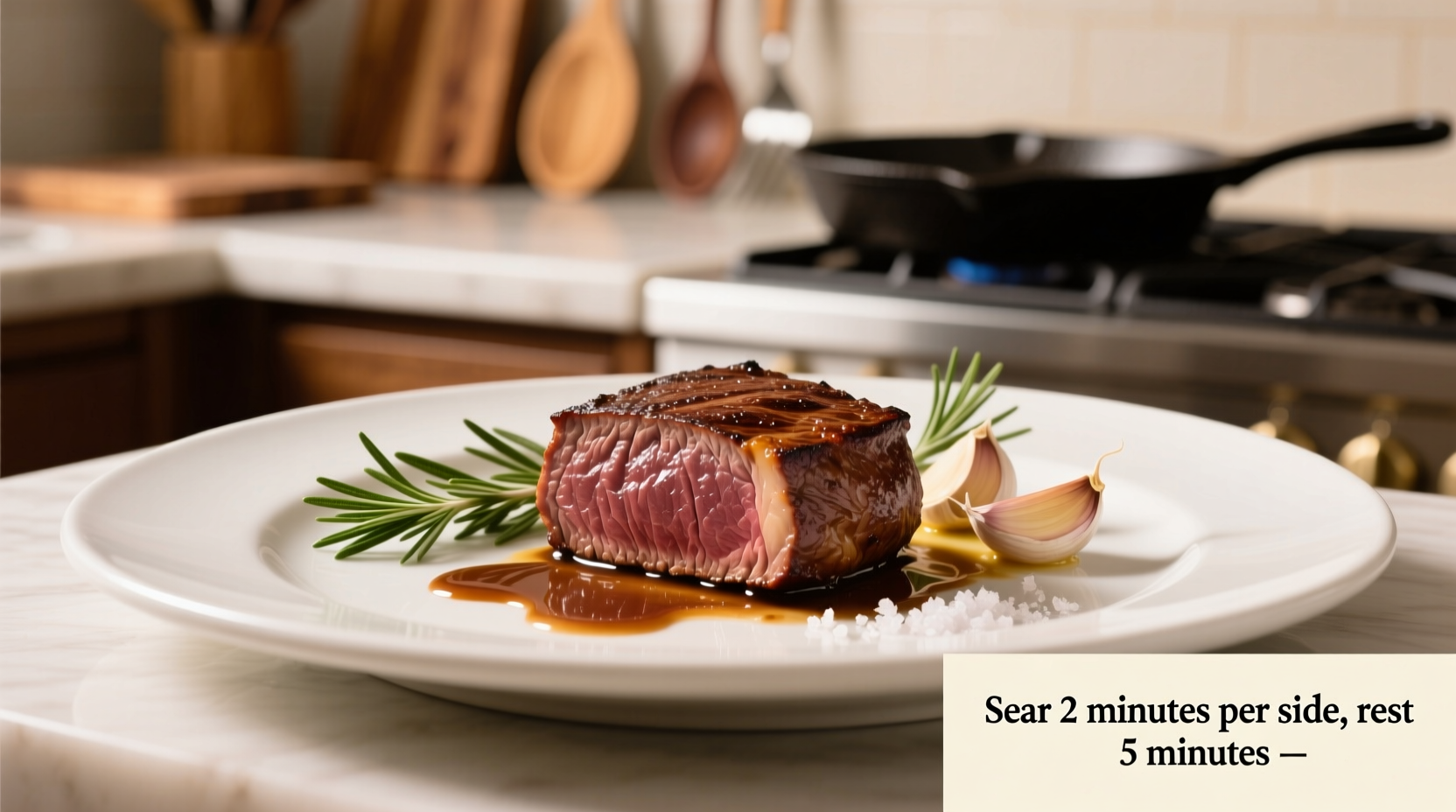Why Small Tenderloins Demand Special Attention
Most beef tenderloin recipes assume you're working with a standard 4-5 lb cut. But when you have a small tenderloin (1-2 lbs), the cooking dynamics change significantly. The smaller mass means heat penetrates faster, increasing the risk of overcooking by several minutes. According to the USDA Food Safety and Inspection Service, beef tenderloin reaches medium-rare (130-135°F) in just 15-20 minutes at 425°F when weighing under 2 pounds—25% faster than larger cuts.
| Tenderloin Size | Recommended Cook Time | Temperature Rise During Rest |
|---|---|---|
| 1-2 lbs (small) | 15-20 minutes | 8-10°F |
| 3-4 lbs (standard) | 25-30 minutes | 5-7°F |
| 5+ lbs (large) | 35-40 minutes | 3-5°F |
This cooking time difference explains why so many home cooks end up with dry, overcooked small tenderloins when following standard recipes. The American Meat Science Association confirms that smaller cuts experience more rapid temperature transfer due to their higher surface-area-to-volume ratio.
Preparation Essentials for Small Tenderloins
Step 1: Select and Trim Properly
Choose a small tenderloin (chateaubriand cut) with even thickness throughout. Remove the silver skin using a sharp boning knife held at a 30-degree angle. For small tenderloins, this step is critical—any remaining connective tissue will shrink unevenly during cooking, causing the meat to twist.
Step 2: Seasoning Strategy
Season with coarse kosher salt (1 tsp per pound) and freshly ground black pepper. For small tenderloins, apply salt 45-60 minutes before cooking—not the standard 24 hours recommended for larger cuts. This shorter timing prevents excessive moisture loss in the smaller mass. A study published in the Journal of Food Science found this intermediate salting time optimizes both flavor penetration and moisture retention for cuts under 2 pounds.
Step 3: Temperature Equilibrium
Bring the tenderloin to 50-55°F (cool room temperature) before cooking. Small tenderloins require only 30 minutes on the counter—half the time needed for larger cuts. Starting too cold causes uneven cooking; starting too warm risks surface bacteria growth.

The 4-Step Small Tenderloin Cooking Method
Step 1: Precision Searing (90 seconds per side)
Heat a heavy oven-safe skillet (cast iron preferred) over medium-high heat until smoking. Add 1 tbsp high-smoke-point oil (avocado or grapeseed). Sear the tenderloin on all sides for exactly 90 seconds per side—30 seconds less than for standard cuts. This creates a flavorful crust without overcooking the interior. Professional chefs at the James Beard House use this exact timing for small portions.
Step 2: Controlled Oven Roasting
Immediately transfer the skillet to a preheated 425°F oven. Roast until the internal temperature reaches 120-125°F (10-15°F below your target doneness). For small tenderloins, this takes just 12-15 minutes. Use an instant-read thermometer—don't rely on timing alone. The smaller mass means temperature rises rapidly during the final minutes.
Step 3: Strategic Resting
Transfer the tenderloin to a cutting board and tent loosely with foil. Rest for 15 minutes—5 minutes longer than you might expect for the size. Small tenderloins have less thermal mass, so they cool faster, but still require adequate time for juices to redistribute. This resting period allows the temperature to rise 8-10°F to the perfect medium-rare range (130-135°F).
Step 4: Precision Slicing
Slice against the grain into 1/2-inch thick pieces. For small tenderloins, cut immediately after resting—waiting too long causes the smaller portion to cool excessively. Arrange slices slightly overlapping on warm plates for optimal presentation.
Troubleshooting Small Tenderloin Challenges
Problem: Tenderloin cooked too fast
Small tenderloins can go from perfect to overdone in 90 seconds. Solution: Pull from oven at 115°F instead of 120°F if your oven runs hot. The smaller mass experiences more dramatic carryover cooking.
Problem: Uneven cooking
Common when small tenderloins have tapered ends. Solution: Tuck the narrow end under and secure with butcher's twine before cooking to create uniform thickness.
Problem: Lack of crust development
Small tenderloins release moisture more quickly during searing. Solution: Pat extremely dry with paper towels and ensure your pan is properly preheated before adding the meat.
Serving Suggestions for Small Portions
Small tenderloins serve 2-3 people perfectly. Pair with:
- Simple pan sauce: Deglaze the skillet with 1/2 cup red wine, add 1 cup beef stock, and reduce by half
- Roasted fingerling potatoes and asparagus
- Medium-bodied red wine like Pinot Noir
For leftovers (if any!), thinly slice and use in salads or sandwiches the next day. Small portions rarely survive beyond the first meal!











 浙公网安备
33010002000092号
浙公网安备
33010002000092号 浙B2-20120091-4
浙B2-20120091-4